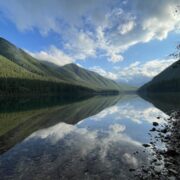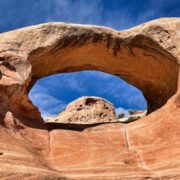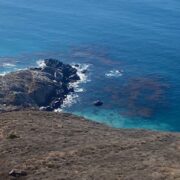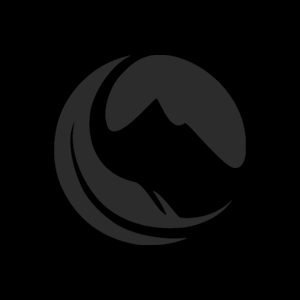Every spring for many years now I have helped my friend Patrick conduct archaeological site surveys in the Kodiak Archipelago. He does the actual archaeological work and I sort of tag along for safety, logistics, and to do most of the camp chores. Between the 2 of us we have about 65 years coastal Alaska backcountry travel experience, mostly in Kodiak and the Alaska Peninsula.
The Native Alaskans living in the Kodiak area are known as the Alutiiq / Sugpiaq people. Their traditional homelands include Prince William Sound, the outer Kenai Peninsula, the Kodiak Archipelago, and the Alaska Peninsula. Here people lived in coastal communities, collected shellfish, caught cod and salmon, and hunted sea mammals from skin-covered boats.
Most of the archaeological sites we encountered were from the ‘Kachemak’ Tradition. Pre-historic Alutiiq history (7500 to 250 years ago) can be divided into three cultural traditions, or ways of living. The first is the Ocean Bay Tradition, where Kodiak’s first residents arrived at least 7,500 years ago. The second is the Kachemak Tradition, which began about 4,000 years ago and focused on both marine mammal hunting and on fishing. The third is the Koniag Tradition, which began about 800 years ago and saw an even greater focus on fishing. Most of the sites we located were on ancient beach berms well back from the current active coastline. More recent settlements may have been obliterated by changes in sea level due to tectonic processes (Kodiak sits on the leading edge of the subduction zone where the Pacific Plate dives under the Alaska Plate) or changes in land height due to rebound after the ice sheets from the last glacial maximum melted about 15,000 years ago.
We normally use inflatable kayaks to travel along the coast because that is the most efficient way to get around. This was only the second time that we were on foot, and it was a pretty short survey as we were just finishing up the south shore of Kiliuda Bay; a 12-mile trip. Last spring, over the course of 6 days we surveyed the much longer north shore of the bay with all its side arms.
We do the surveys in the spring before the grass and other vegetation starts to grow because the evidence of human occupation can be subtle to discern. It often presents as shallow depressions in the ground which is all that remains of the semi-subterranean dwellings the Natives used. We also look for dark soil from charcoal, rocks that have been discolored and cracked from the heat from fire, and middens (kitchen refuse like shell and bone). I don’t particularly like traveling this early in the spring with its typical chilly wet weather, but it gets me out seeing some parts of the islands I might not visit often otherwise.
This is the time of the year when some coastal brown bears come out of ‘hibernation.’ Hibernation is a bit of a misnomer as certain ages and sexes of coastal brown bears may enter periods (weeks or months) of deep torpor in winter but don’t technically hibernate in a scientific sense. As long as bears (mostly boars) have access to food resources, they may remain active all winter. For example, if they can scavenge stranded marine mammals, winter-kill of Sitka black tail deer, or access other foods then there is no bioenergetic advantage to denning. That said, subadult bears and females that are pregnant or caring for juveniles will den with the sows bearing cubs-of-the-year emerging last, sometimes as late as June. On this trip we only saw one sow with cubs, and her two cubs were only 1-year old. Seeing them on the beach in early May was a bit of a surprise.
This was also the only bear encounter we had that gave us pause. There were several choke points along our route where brushy mountains plunged to the coastline in vertical cliffs necessitating us to negotiate the narrow beach during a low or ‘minus’ tide. At the first real choke point on the first day, we rounded a bend in the 10-meter-wide beach below seemingly vertical cliffs only to encounter the sow with her cubs plus another random individual bear, all contently eating yummies in the intertidal. The lone bear took off down the beach in our intended direction of travel. This was fine; we could deal with that later. But the sow directed her cubs behind a rock fin towards the cliff, out of sight. Patrick and I considered our options and concluded going forward comprised the entirety of the list given how sucky it would have been to climb over the mountain to skip this short section of the coast. We pensively edged up to the rock fin and peered around it. No one was home and we saw a steep gully leading up through the cliffs. Relieved we continued and as we got a better view up the gully we could see the sow cliffed-out a short distance up the slope. She eyed us warily but didn’t seem too fussed, so we hurried along. All our other bear encounters were similarly non-issues. If we did not direct our attention to the bear, they would similarly tolerate us being in the area. If we walked in their direction or made our presence obvious, they would leave the area. Kodiak is actually a pretty safe place to be around brown bears.
It rained periodically the first day and all through the night. The second day was overcast but pleasant and we didn’t have to deal with any real wind during the trip. We collected our favorite flavor of driftwood for the woodstove: red and yellow cedar branches. These crossed the Gulf of Alaska from Southeast Alaska for our combustion pleasure. They are dense, knot-free, and smell amazing when cut. The warmth from the titanium woodstove and palatial living space of a Cuben Seek Outside Redcliff make even marginal camping conditions in early spring quite pleasant.







Home › Forums › Kodiak Island coastal travel in south Kiliuda Bay for archaeology